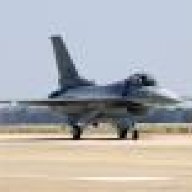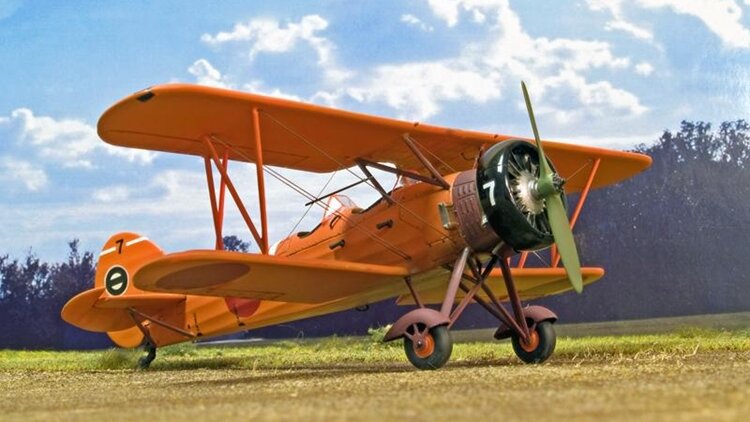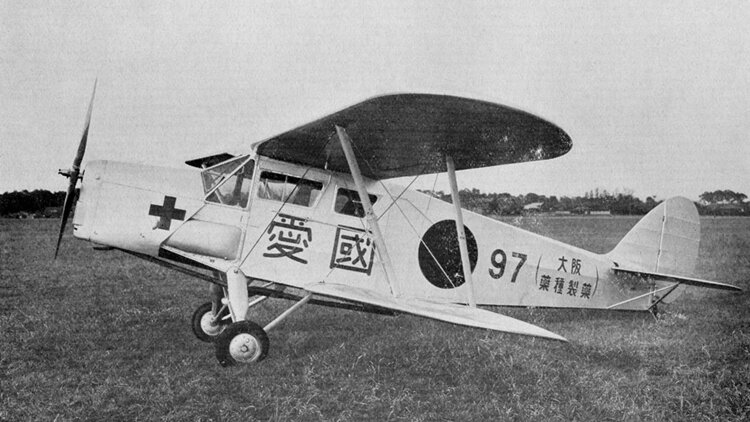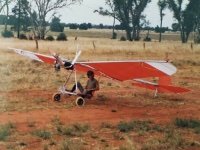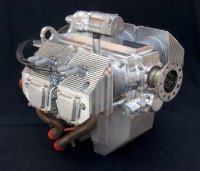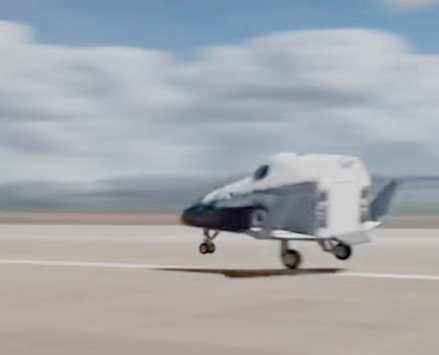All Activity
- Past hour
-
Wings of the Drifters; immediately there was a big increase in performance, but it was noted that performance fell off quickly, and many finished up in swamps and gulleys until bull came up with and "Uppers" pocket in his flying suit. Being an exhibitionist, bull walked into a pub one night. The "Uppers" label on his pocket (bull labelled everything) attracted Constable Doubtfire who was there to celebrate a birthday and ...................................
- Today
-
creekman joined the community
-
onetrack started following The Oaks (NSW) - Serpentine (WA)
-
Skippy - Will Owen from the S.W. of W.A. owns one of your favourite ultralights, and has done a West-East-West trip in recent times. He posted some details of his trip on here, but I can't find it now. He should be able to provide useful trip information, and he may even be keen to join you for at least part of your trip, and I'm sure he can get you up to speed on what's what in W.A. Unfortunately, I can't even recall what his username is on here, someone else may know. He's a nice bloke, very helpful - I know him because my best friend worked on his farms, and I visited the main farm, and met Will, several years ago. He's leased out his farms, and I'm not sure what he does on a daily basis now, but I think he still flies regularly, however I'm not sure if he still instructs. https://www.facebook.com/willflyhire.com.au/
-
skippydiesel started following Bass Strait plane missing 02/08/25 and The Oaks (NSW) - Serpentine (WA)
-
Forum News & Debate is a tad slow at the moment, so I thought I would offer this, as something many of you may like to get involved in. For years I have wanted to fly from The Oaks to WA in a small aircraft - all sorts of hurdles have got in the way however the opportunity may now be close. Forum News & Debate is a tad slow at the moment, so I thought I would offer this, as something many of you may like to get involved in. I will be flying my Sonex Legacy, Rotax 912ULS, with just me on board. Some necessary planning details; She carries an easy 95+ L usable fuel (preferably 98 RON) I usually flight plan at 130 knots True @ 15L/hr ,for 5.6 hrs duration and 40 + minutes reserve (10L) at same power setting. I would also prefer to land for refueling with 30+ L remaining (I am paranoid about running out of fuel) I would prefer not to fly for more than 3 hrs without a wee stop, say 2-3 hrs is perfect. I will be carrying collapsible fuel bladders to facilitate fetching 95 RON (I will only corrupt her innards with AVGas if no reasonable alternative exists). I am in no particular hurry but fully aware that the more time I take, the more additional cost for sustenance & accommodation and the more potential for adverse weather to impede my progress.. I am more than happy, within reason (?) to divert of the most direct overland track, to visit fellow pilots &/or take in particular points of interest, that you may recomend. I would like to follow the coastline but will avoid any significant overwater, other than a short dash over the northern part of the Spencer Gulf. I have some idea of returning via a more inland route.than the largely Coastal SA& WA section. I would be delighted to "fly in company" with another aircraft for all or part of the trip. At this stage I have not made contact with any one or airfield along the rout (?). I am hoping that the woeful flying weather that the East of the country has been experiencing, may clear within the next month or so. I may be wrong however summer flying on this trip, seems to present additional challenges that may not be so pleasant for a recreational pilot. Serpentine appears to be a reasonable destination - you may advise otherwise. I await your council/recommendation with great interest.😈
- 1 reply
-
- 1
-

-
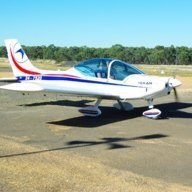
Bass Strait plane missing 02/08/25
pmccarthy replied to BurnieM's topic in Aircraft Incidents and Accidents
I have done that in a Bristell. The sockets are together. We had no comms, thought the radio was u/s. -
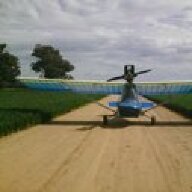
Bass Strait plane missing 02/08/25
Thruster88 replied to BurnieM's topic in Aircraft Incidents and Accidents
A type of radio failure that has happened in our ctaf is pilot headset plugged into the copilot Jack's, radio appears to work but no voice is transmitted. This was two different aircraft with all the Jack's between and or partly behind the seats. -
Bass Strait plane missing 02/08/25
skippydiesel replied to BurnieM's topic in Aircraft Incidents and Accidents
While I agree your radio check advice is what we should all aspire to, it seems to me that you have gone too far in not recognising the realities of operating from small country strips. I always make taxi, lineup, rolling , departure (leg) calls etc. Only "once in a blue moon" do I get any sort of response/acknowledgement, and this is from within the Sydney Basin. Technically this is not a radio check, however I also know that most often there is no one on my CTAF to respond, no one on the airfield at all. I do monitor Area Frequency, so know that I am receiving but have no guarantee that my transmission are being heard, until airborne, when I may (on rare occasions) be able to raise someone at a neighbouring field, on the same CTAF. This is also the situaton, when on a trip, to many more remote airfields, that is unless there is a Club meeting/RPT/Student training/etc. 😈 -
The Tupolev Tu-91 (NATO reporting name Boot) was a two-seat Soviet attack aircraft built during the 1950s. It was initially designed as a carrier-borne aircraft, but was converted into a land-based aircraft after Joseph Stalin's death in 1953 cancelled the aircraft carriers being designed. Two prototypes had been built and production had been approved by the Soviet Navy when it was inspected by the General Secretary, Nikita Khrushchev, in 1956. He remarked how ridiculous the Tu-91 looked and the program was cancelled. Kuznetsov had ordered preliminary design work to begin on the Project 85 light aircraft carrier and the aircraft for the ship before Stalin's death, although the ship was never more than a paper design. This allowed the Tupolev Design bureau to decide upon on a single-engined turboprop aircraft to meet Soviet Naval Aviation's requirement for a long-range strike aircraft, capable of attacking targets with bombs or torpedoes. The new leaders of the Soviet Union rejected proposals for carriers and the Council of Ministers issued a requirement for a land-based bomber powered by a Kuznetsov TV-2 turboprop engine that was capable of level and dive bombing attacks on targets with bombs, torpedoes, rockets, gunfire and naval mines, in addition to coastal reconnaissance missions, on 29 April 1953. This forced the bureau to revise the design to eliminate the wing-folding mechanism, arresting gear and other carrier-specific equipment for the second prototype. The Tu-91 first flew on 17 May 1955, when the manufacturer's flight testing began. They concluded successfully about September with the test pilots concluding that the aircraft was highly manoeuverable, although barrel rolls should be forbidden. The aircraft also passed the subsequent state testing and the design bureau began preparing for production at Factory No. 31, in Tbilisi, Georgia. The Tu-91 was part of a display of the latest military aircraft for the Soviet leadership in mid-1956, one of the very few propeller-driven aircraft present. When the newly elected Khrushchev inquired about the aircraft, the officer detailed to the aircraft misspoke, stating that it could do the job of a heavy cruiser rather than it had the firepower of that ship. Khrushchev replied, "But nobody needs heavy cruisers any more", and commented how ridiculous it looked. This off-hand comment caused the program to be cancelled. Only 2 had been built. Video here.
-
Seeing those lancair evolution airframes at the end of the JMB vid reminded me of this "accident". Know your aircraft. Lancair Evolution Crash N571JM – Fatal Electrical Failure on May 3, 2021 PILOTDEBRIEF.COM Discover the story of Lancair Evolution N571JM's fatal May 3, 2021 crash, caused by electrical failure and pilot error in emergency procedures.
-
Bass Strait plane missing 02/08/25
Love to fly replied to BurnieM's topic in Aircraft Incidents and Accidents
My comments were just in relation to doing a comns check every flight. I don't for obvious reasons. But I do check that tx comes up when I give a taxi call. -

Bass Strait plane missing 02/08/25
onetrack replied to BurnieM's topic in Aircraft Incidents and Accidents
Greg Vaughan had mates watching and listening for him, and associates working in a nearby hangar, so its not like any calls he made wouldn't be heard. In a rural region, you'd arrange for a friend or associate with a radio to check your transmissions were coming through. And if you were in such a remote spot that there's no-one within a 100 kms, then all you can hope for is an aircraft nearby at altitude that's listening. -
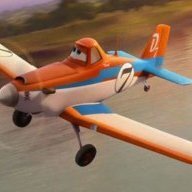
Bass Strait plane missing 02/08/25
facthunter replied to BurnieM's topic in Aircraft Incidents and Accidents
People at altitude. IF you are serious have someone with a handheld .Nev -
Lenom joined the community
-
Bass Strait plane missing 02/08/25
FlyBoy1960 replied to BurnieM's topic in Aircraft Incidents and Accidents
if you're airfield is isolated and there is nobody within line of sight an "all station"s call won't do anything ? -

Bass Strait plane missing 02/08/25
facthunter replied to BurnieM's topic in Aircraft Incidents and Accidents
Do an all stations comm check call.. Nev -
Bass Strait plane missing 02/08/25
Love to fly replied to BurnieM's topic in Aircraft Incidents and Accidents
Sure. But a lot if ALA's don't. -
Bass Strait plane missing 02/08/25
FlyBoy1960 replied to BurnieM's topic in Aircraft Incidents and Accidents
A lot of CTAF locations will have a beep back after you finish your transmission. This way you know that your radio is working -
Bass Strait plane missing 02/08/25
BurnieM replied to BurnieM's topic in Aircraft Incidents and Accidents
Minimal staff on a Saturday and a member of the public asks if you heard an aircraft without knowledge of an actual incident. This is probably standard procedure and unlikely to change. To review that tapes would probably require calling someone in with higher access so even if they escalated it probably 2 hours plus before they started reviewing the calls. -
Bass Strait plane missing 02/08/25
Love to fly replied to BurnieM's topic in Aircraft Incidents and Accidents
Genuine question. I routinely take off from airports where there is no one else flying, and you can't reach CTR till 4,500'. How do you suggest I do a comms check? -
.... taking lots of other meds, including quite a few of Tubb's usual uppers and downers, which he learnt to manage (and enjoy) when long distance trucking while testing his various designs of chassis mods (Turbs needed lots of uppers back then, when his trucks broke down due to HT cracks). The AUF shindig really went into high gear when Turbo prescribed (he is a medical professional and not a dealer) small amounts of uppers to the ...... I hasten to add for the benefit of any new NESers, that my close mates Turbo, Onetrack and bull have never needed to use drink spiking drugs as the ladies, and some trannies, can't get enough of them when they are out on the town.
-

Bass Strait plane missing 02/08/25
onetrack replied to BurnieM's topic in Aircraft Incidents and Accidents
What highly experienced pilot takes off without a comms check, and ensures he has working communication? This whole episode gets stranger by the day. Their aviation friends were so concerned about the lack of a departure call, they were initiating a search within half an hour of departure. Airservices Australia are not looking too good here, too lazy to even look up if there had been a call, when their friends inquired. Early search action might have had success. -
The Tachikawa Ki-9 (九五式一型練習機, Kyūgo-shiki ichigata renshuki) was an intermediate training aircraft of the Imperial Japanese Army Air Force built by Tachikawa Aircraft Company Ltd in the 1930s. It was known to the Allies under the nickname of "Spruce" during World War II. This aircraft was mistakenly identified as a Tatchikawa by the British. The Ki-9 was a two-seat, unequal wingspan biplane design. Tachikawa originally planned to use the same basic airframe for both basic training and intermediate training, differentiating the two models by the use of different engines. The prototype Ki-9 flew on 7 January 1935, powered by a 261 kW (350 hp) nine-cylinder Hitachi Ha-13a radial engine. The second prototype was identical, and the third prototype was powered by a 112 hp (80 kW) Nakajima NZ seven-cylinder radial engine. The third prototype exhibited stability problems due to a center of gravity issue, and, as a result, the primary trainer model was abandoned and the Ki-9 was developed only for the intermediate trainer. Tachikawa subsequently developed the Ki-17 for the primary trainer role. The first production aircraft were delivered in 1935. The Ki-9 was introduced to service as the Army Type 95-1 Medium Grade Trainer Model A under the former aircraft naming nomenclature system. The first version had a complex, split-axle landing gear with fairings over the top of the wheels. In 1939, this was modified and simplified, the fuselage slightly shortened, and the total weight reduced. The resulting Army Type 95-1 Model B or Ki-9-kai had improved maneuverability and flight characteristics. This version was quickly superseded by the Army Type 95-1 Model C, or Ki-9-otsu, in full production. Both versions were used widely for blind-flying training with a folding hood over the rear cockpit, and several were modified with a glazed canopy over the rear cockpit for use as a staff officer transport plane. Some were pressed into service for use as "special attack" (kamikaze in American terminology) aircraft in the closing days of the war, fitted with either a 100 kg anti-ship bomb, an oil drum filled with explosives, or fuel in the rear cockpit. Production by Tachikawa totaled 2,395 aircraft, ending in 1942. At least another 220 Ki-9s were constructed by Tokyo Gasu Denki (also known as Gasuden) from 1943 to 1945. The Ki-9 was also flown in wartime by Japanese satellite countries and postwar by the fledgling government of Indonesia and captured units by the Republic of China. Variants Ki-9 (Army Type 95-1 Medium Grade Trainer Model A): Initial version two-seat intermediate trainer aircraft. Ki-9-ko (Army Type 95-1 Medium Grade Trainer Model B): Improved version. Ki-9-otsu (Army Type 95-1 Medium Grade Trainer Model C): Standard production version.
-
The Tachikawa KKY, full name Tachikawa Army Small and Light Ambulance Aircraft, was designed to rescue injured or sick patients from places without established airfields. Following two earlier prototypes, twenty-one production examples were built between 1936 and 1940 and served in the Second Sino-Japanese War. In August 1932, the Japanese Army placed an order for a small ambulance aircraft, capable of using rough airstrips and holding two stretcher cases and a medical attendant, with what was then the Aeroplane Factory of Ishikawajima Shipbuilding Company. Though the prototype was completed in December 1933, its development was protracted, and it was not ready for production until 1936. By then, the Ishikawajima Company had become the Tachikawa Aeroplane Co. It was a single bay cabin biplane with wings attached to the upper and lower longerons and braced on each side with near-parallel interplane struts. The wings had wooden structures and were fabric-covered. The KKY was powered by a 120–130 hp (89–97 kW) Cirrus Hermes IV four cylinder air-cooled, inverted inline engine and the later KKY-2 by a 150 hp (110 kW) Gasuden Jimpu seven cylinder radial engine. The fuselage had a welded steel tube structure, flat-sided behind the engine, with a windowed cabin that included the pilot's seat just ahead of the wing leading edge with the patients and attendant under the wing. The tail, with an aluminium structure and fabric-covered, was conventional with a tailplane on top of the fuselage and braced to it from below. The vertical tail had a strongly-blunted triangular profile. As its purpose was to rescue patients from rough airfields or unmade airstrips, the ambulance needed a robust undercarriage. This had split axles mounted on a short, central, V-strut from the fuselage underside. Both short, faired shock absorber legs and their rearward drag struts were mounted on the lower fuselage longerons. Wheels with wide, low-pressure tires were available for missions to unmade strips. Twenty-one Aikoku-go (privately funded) production KKYs were built between 1936 and 1940. They were active in the Second Sino-Japanese War, which began in 1937 and became part of World War II, when China entered on the Allies' side shortly after the attack on Pearl Harbor.
-
.......YMEDs followed by ..............
-

Bass Strait plane missing 02/08/25
Thruster88 replied to BurnieM's topic in Aircraft Incidents and Accidents
The transponder had become visible before reaching the coast to the north or west on previous flights. Locals report no calls on the ctaf. It is like the avionics switch was off. -

China is sorting out their supply chain
facthunter replied to danny_galaga's topic in Aircraft General Discussion
Joe had a brain and knowledge to lapse in his MOMENTS. Trumps KNOWLEDGE is of the Lacking variety. He has Nothing to lose. Nev -
facthunter started following Suction Pad Warning
-
There's Carbon Black in Rubber. Not many light aircraft window materials like fuel or the sun. Nev
-
Who's Online (See full list)
-
Tell a friend
-

Latest Site Update
The Recreational Flying Classifieds are back and they are FREE for you to list anything that you have for sale. Do you have an aircraft you wish to sell or some aircraft parts, pilot equipment or anything in aviation that you no longer need, well convert it to cash through the Classifieds System here on Recreational Flying, IT'S FREE TO LIST YOUR ITEM, or you can select the Featured option for only $10 which goes towards the cost of running the site. -
Site Donations
Help towards the site running costs and keep this great resource here for all recreational aviators
Site Donations
and be a First Class Member! -
Join or Create a Group
-
U.S.A. FAA FAR Part 103 and Basic Flying Machines
Public Group
-
Jabiru Engines
Open Group · 50 members
-
Recreational Flying Site group
Public Group
-
-
Upcoming Events
No upcoming events found -
Latest Gallery Image
-
Latest Books


